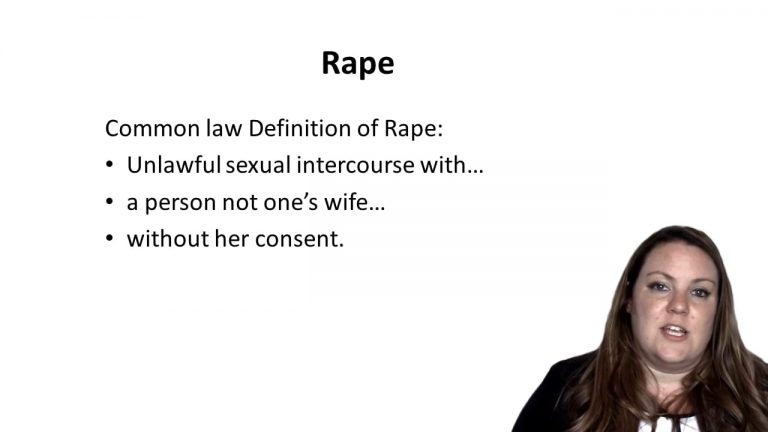SmartBrief
Confirm favorite deletion?
Criminal Law Keyed to Kennedy
Rusk v. State
Citation:
406 A.2d 624 (1979)Facts
A 21-year-old woman was out bar hopping with her friend. They drove separate cars. At the third bar, she met the defendant. Defendant asked for a ride home, and she agreed.
When they arrived at defendant’s home, the woman parked on the curb on the side of the street opposite his house, but did not turn off the ignition. Defendant asked her to come inside of his apartment, and she refused. He continued to ask, and the woman testified that she felt afraid at this point. Defendant took the keys out of the car, walked over to her side of the car, opened the door, and said, “Now will you come up?”
She testified that she was scared because he had her keys and she did not know what else to do, so she agreed and went inside of his apartment. When they got into defendant’s room, he said that he had to go to the bathroom and left the room for a few minutes. She did not attempt to leave. When defendant came back, he sat on the bed while she sat on a chair next to the bed. Defendant turned off the light and asked her to get on the bed with him. He started to pull her onto the bed and also began to remove her blouse. She stated that she took off her pants and removed his clothing, because he asked her to do it.
Once both undressed, the woman begged him to let her leave. She asked him: “If I do what you want, will you let me go without killing me?” She started to cry, and defendant lightly choked her. She asked the question again and he said yes. She performed oral sex and then they had sexual intercourse.
Defendant was convicted of rape in the second degree. He appealed, arguing that the intercourse was not accompanied by force or threats of force.
Only StudyBuddy Pro offers the complete Case Brief Anatomy*
Access the most important case brief elements for optimal case understanding.
*Case Brief Anatomy includes: Brief Prologue, Complete Case Brief, Brief Epilogue
- The Brief Prologue provides necessary case brief introductory information and includes:
Topic:
Identifies the topic of law and where this case fits within your course outline.Parties:
Identifies the cast of characters involved in the case.Procedural Posture & History:
Shares the case history with how lower courts have ruled on the matter.Case Key Terms, Acts, Doctrines, etc.:
A case specific Legal Term Dictionary.Case Doctrines, Acts, Statutes, Amendments and Treatises:
Identifies and Defines Legal Authority used in this case.
- The Case Brief is the complete case summarized and authored in the traditional Law School I.R.A.C. format. The Pro case brief includes:
Brief Facts:
A Synopsis of the Facts of the case.Rule of Law:
Identifies the Legal Principle the Court used in deciding the case.Facts:
What are the factual circumstances that gave rise to the civil or criminal case? What is the relationship of the Parties that are involved in the case.Issue(s):
Lists the Questions of Law that are raised by the Facts of the case.Holding:
Shares the Court's answer to the legal questions raised in the issue.Concurring / Dissenting Opinions:
Includes valuable concurring or dissenting opinions and their key points.Reasoning and Analysis:
Identifies the chain of argument(s) which led the judges to rule as they did.
- The Brief Prologue closes the case brief with important forward-looking discussion and includes:
Policy:
Identifies the Policy if any that has been established by the case.Court Direction:
Shares where the Court went from here for this case.
Topic Resources
Topic Outline

 3m 19s
3m 19s